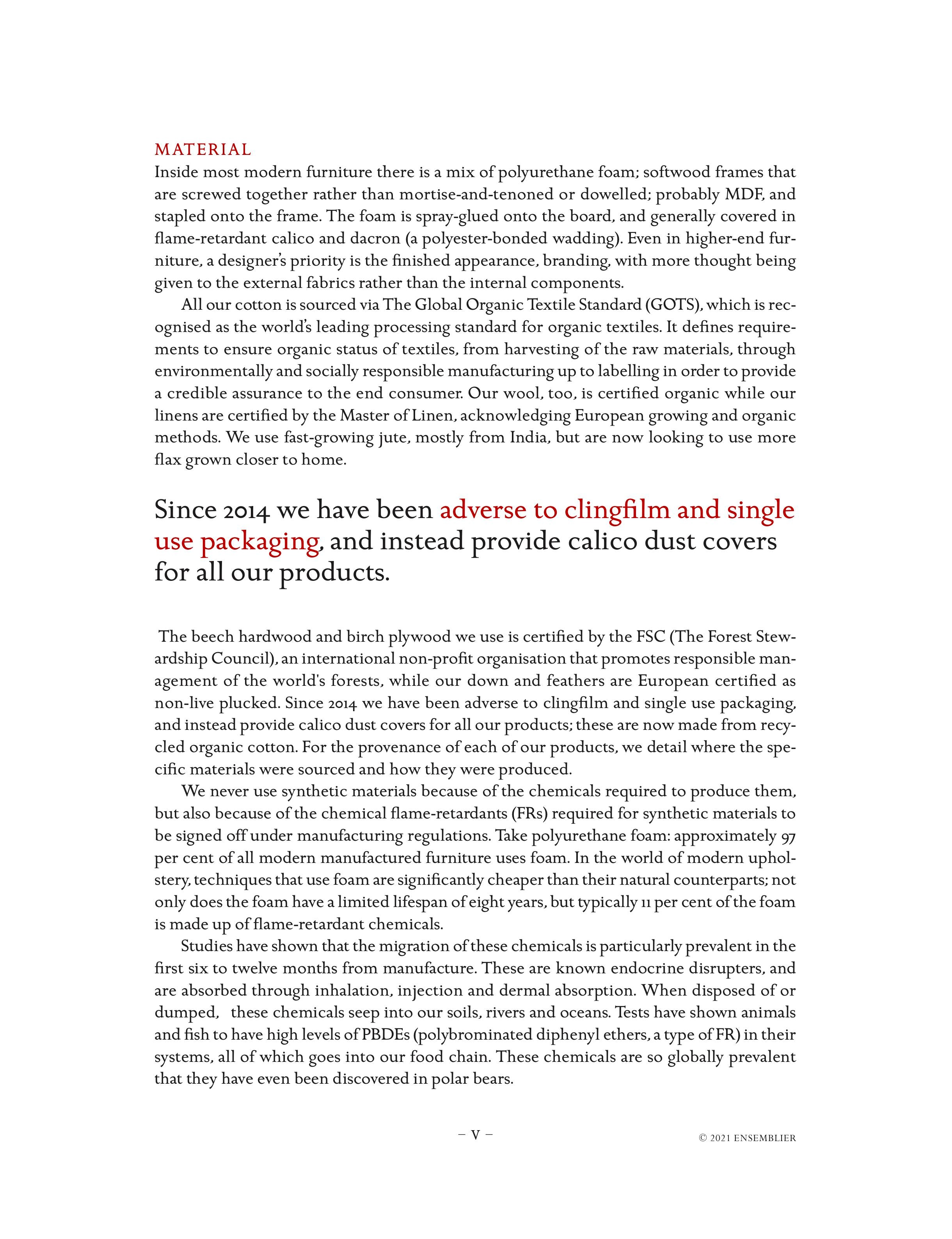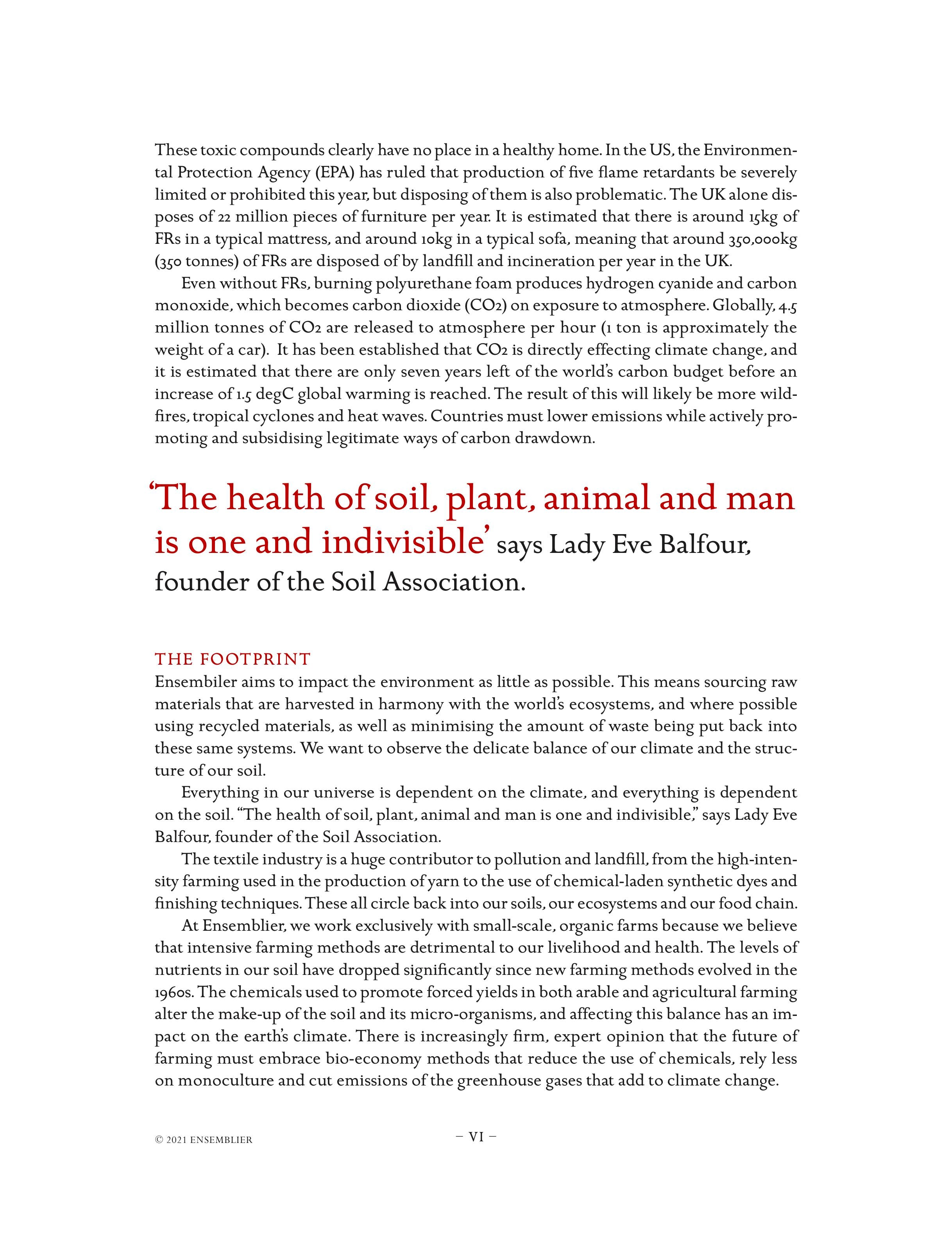
Interior designer, Tara Craig spent her early career absorbing everything that embodies truly unique, beautiful interiors – studying fine art in Florence and 20th century design at the Sotheby’s Institute.
Describing herself as “a Georgian at heart”, her style is a culmination of her passion for design history, art and traditional craft.
We find out more about Tara’s fascinating career path and what inspired her to establish her brand, Ensemblier.
 Tara in her London home
Tara in her London home
Do you have any early memories of interiors?
My Grandmother telling me stories of fantastical houses in Ireland in the 1920/30s when she was growing up, hearing about grand rooms with threadbare carpets. My Great Grandmother going around thrift shops and digging out some treasure.
Tell us about your interior design journey
I studied fine art in Florence and interior design at KLC. I then assisted at House & Garden so for the first five years I had a strong photography background. I took a post graduate course in 20th century design at Sotheby’s Institute to have more of an understanding on the history and production methods. I like the way that interiors are an art and the intrinsic value of well-made pieces of furniture.
Other reasons – I love history, reading biographies and looking at old Country Life interior images. Art always inspires, especially portraits for the details and textiles. Interior design was just one way to express my experience and studies visually, and all these interests inform my work.
Individuals can’t just ‘become’ decorators, with no formal training at a school or in a firm, and have people actually pay them to consult when they have no idea on curtain headings, drops, materials, upholstery etc. You wouldn’t take advice from an unqualified lawyer or doctor, would you?! Front room decorators can give our industry a bad name.
My interior design projects are built over the long term, as I consider the antiques and artworks. I work a lot with art dealers and houses with collections. But beautiful interiors don’t happen overnight. Any noteworthy interior is embellished over time.
 "Any noteworthy interior is embellished over time."
"Any noteworthy interior is embellished over time."
Tell us about Ensemblier, what inspired you to begin the company?
I’ve always had a restoration background and decided to specialise in soft furnishing and in particular upholstery after a workshop I’d worked with suggested that there were no interesting headboards on the market for retail clients. So, I set to work in the art library studying 18th century furniture inspiration.
Ensemblier was set up to support British craftsmen, at the time there was real concern that these highly skilled artisans and their traditions would go extinct. So much upholstery is either made abroad or cheaply with foam and MDF board. Our focus is to give consumers a choice to make informed interior and lifestyle decisions. Greenwashing is everywhere and the chemicals in the cheap alternatives are toxic, not only for humans but also the environment. To help establish incentives for a circular economy. After all, everything is part of a greater eco system, the micro and macro are so interlinked.
What inspires your Ensemblier collections?
At the time, Kit Kemp was a big presence for her fun, colourful and bold statement headboards. Show stoppers in the rooms. However, I have always remained a Georgian at heart, so William Kent had made a huge impression. Now more so, understated, classic, timeless interiors, and the headboards of Sybil Colefax, Rose Cumming, Francois Catroux, Parish Hadley, Madeline Castung, Jean Munro, Elise de Woolf the list goes on. Art too, paintings are a wonderful reference.
I’ve love upholstery details… an extra knife pleat in the kick pleat. I also look outside of interiors for headboard shapes such as vintage dresses from 1930s. I have lots of sources close to my heart, as Diane Vreeland said “the eye has to travel”. Everything brings you something if you are open and have a curious mind. Nothing is completely new, just a good designer brings all the subjective content from the years, and interprets a reference, changing, and refining or ornamenting further. It is so different from complete replication, and taking from a screen shot. How dull, no thought!
 A beautiful Ensemblier headboard seen with Collier Webb Scallop light
A beautiful Ensemblier headboard seen with Collier Webb Scallop light
Advice for aspiring interior designers
Go to one of the old-school firms like Sybil Colefax, MHZ London, Bunny Williams and learn a solid grounding for a few years. Picasso studied in the Academy before he went his own way. It really sorts the wheat from the chaff, between those who only replicate and the true aesthetes of style.
Are there any items that you find are reoccurring in your projects?
Pieces that have intrinsic value, antique furniture, traditional upholstery, good lighting.
Favourite room to design
Oddly enough bathrooms and kitchens but these can be both a nightmare and exquisite. Of course all the elements of drawing rooms and bedrooms.
I’d love to do a boutique hotel with entirely natural materials as that hasn’t been done for probably at least 40 years, or maybe not even since pre 1950s. Wasn’t the Savoy refurbishment utter sacrilege – selling off all that amazing furniture that should have been restored.
Simpson on the Strand is even worse, they’ve hung unexceptional art on the listed oak panelling, reupholstered the exceptional fitted banquettes in foam with terrible faux leather and fat pipes and the reproduced dining chairs are so uncomfortable. The reason Edwardian dining chairs were mainly show wood with drop in seat is that they could easily be changed and recovered.
 "Oddly enough bathrooms and kitchens but these can be both a nightmare and exquisite." - Tara on her favourite rooms to design
"Oddly enough bathrooms and kitchens but these can be both a nightmare and exquisite." - Tara on her favourite rooms to design Tara's London kitchen
Tara's London kitchen
Favourite room in your own home
My bedroom, as I have fabric walling so it dampens the London hum. I have the most wonderful reading lights, which is an adaptation of your shell library light.
Favourite piece in your own home
My mahogany Seminar, (Irish tall boy), it’s from the 1760’s, and was a great, great Aunt’s, so assume was in the family since being made. I have another I bought with a single handle and a more ornate one with fretwork frieze motif, but my favourite is the inherited one. They were only made by two workshops in Dublin from 1760’s to 1780’s, and are fabulous, as they were made in Cuban mahogany would have probably been growing nearing 500 years, and the ships docked in Dublin before England so they had the pick of the bunch.
Home comforts you couldn’t live without
A decent horse hair mattress and Savoir topper. Also, down pillows, good linen, and a good sofa with down seat cushions.
 A beautiful Ensemblier sofa and Tara's treasured antique mahogany Seminar in her London living room
A beautiful Ensemblier sofa and Tara's treasured antique mahogany Seminar in her London living room
How you came to work with Collier Webb
I have always admired your pieces, but I particularly love the company’s adaptability to entirely bespoke and custom items. I work with the most wonderful guy at your foundry, Paul Smith, so helpful on the technical parts… how to fix these super skiing poles without obvious brackets!
Favourite Collier Webb piece
In my flat it would be a draw between my bathroom wall scones – I love the glass reeding, and the shell reading lights. I’ve recently ordered one of your Samantha Todhunter Martini floor lights for a client. I really wanted to use the matching Frank lights, just they didn’t quite sit. So are on the list for another project!

Collier Webb Classic Shot Light as seen in Tara's bathroom

Collier Webb Clipper Task Light in one of Tara's designs
Read the original Collier Webb 'Five Minutes with Tara Craig' interview here. See more exclusive images of Tara's Chelsea apartment here.
















